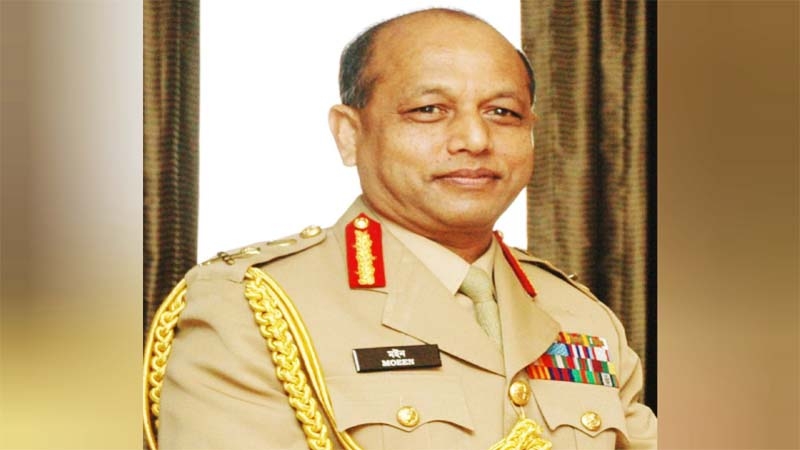- Stocks end lower; trading falls at DSE, improves at CSE |
- No need to be kind to election disruptors: EC to law enforcers |
- No Media Faced Arson Attacks in 53 Years: Mahfuz Anam |
- Janaza of six Bangladeshi peacekeepers held at Dhaka Cantonment |
- Bangladesh stock market loses Tk 10,500cr in a week |
Moeen U Ahmed Breaks Silence on Pilkhana Massacre

Moeen U Ahmed, former Chief of Army Staff, has for the first time publicly discussed the Pilkhana massacre of February 25-26, 2009. In a recent YouTube video, Ahmed detailed the tragic events and his role during one of the darkest episodes in Bangladesh’s history.
The Pilkhana carnage, which unfolded at the Bangladesh Rifles (now Border Guard Bangladesh) Headquarters, resulted in the deaths of 74 people, including 57 army officers. The incident has long been shrouded in speculation, with various accusations aimed at then-Prime Minister Sheikh Hasina and other Awami League leaders.
Ahmed, who is currently residing abroad, revealed that on the morning of February 25, 2009, he was preparing for a regular meeting when he received information about the unrest at Pilkhana. Initially, he was told by the then Chief of General Staff, Lt Gen Sinha, about surplus mortars intended for the BDR, which were to be transferred from the army. This transfer was authorized by BDR DG General Shakil, who Ahmed believes was unaware of the impending rebellion.
By 9:30 am, Ahmed received urgent updates about the situation from his Principal Secretary, Col Feroz. Despite attempts to contact Prime Minister Sheikh Hasina, the lines were busy. He then received intel from military sources, prompting him to initiate 'Operation Restore Order' by mobilizing an additional brigade of the army.
Ahmed recounted that DG BDR Shakil, reached at 9:47 am, reported an ongoing rebellion, with armed soldiers disrupting a meeting and gunshots being heard. Ahmed managed to contact Sheikh Hasina by 9:54 am, who inquired about the brigade’s deployment time. The brigade set out within an hour, but insurgents had already fortified their positions, making the operation more challenging.
Ahmed criticized the live media coverage during the mutiny, suggesting it exacerbated the situation. He also noted that Captain Shafiq and 355 members of the Rapid Action Battalion (RAB) arrived at Pilkhana before 10 am but were initially denied entry, which could have alleviated the crisis sooner.
At 11:45 am, Ahmed was informed that the government was attempting to address the crisis through political means. Rebels demanded the withdrawal of the army before negotiations could begin. By 1 pm, former ministers Jahangir Kabir Nanak and Mirza Azam were dispatched to Pilkhana to negotiate.
Ahmed recounted that when he met Sheikh Hasina, he insisted on clear terms: an immediate halt to the killings, release of detainees, surrender of armed rebels, and rejection of any amnesty. He emphasized that the army did not receive the necessary support from the government for a thorough investigation of the rebellion.
He criticized the subsequent investigation led by Lt Gen Jahangir Alam Chowdhury, who faced difficulties due to limited access to detainees and other constraints. Ahmed hopes that Chowdhury, now a home affairs adviser, will reconstitute the investigation to uncover the culprits.
In his video, Ahmed called for a fair and comprehensive investigation into the Pilkhana massacre and announced that he will soon publish a book detailing his account of the BDR mutiny.

